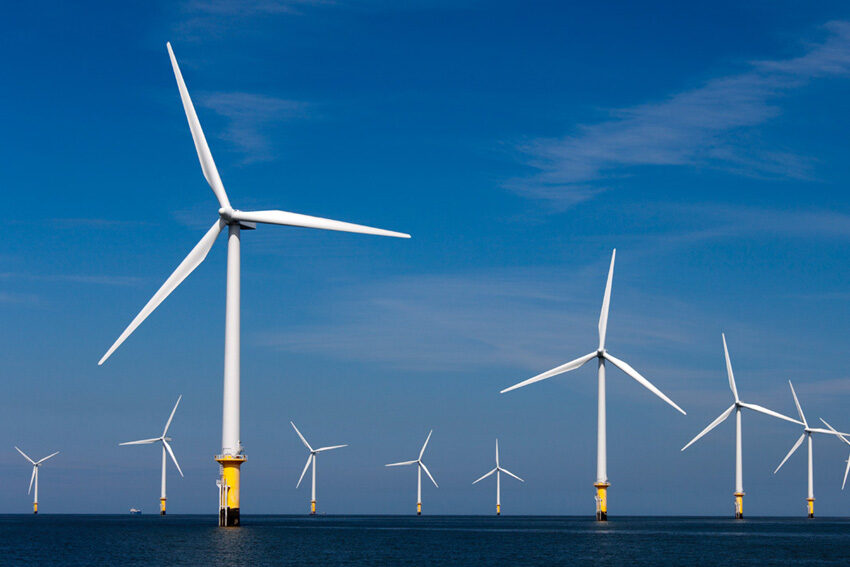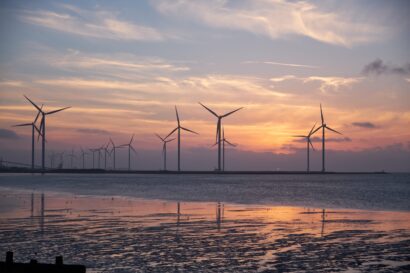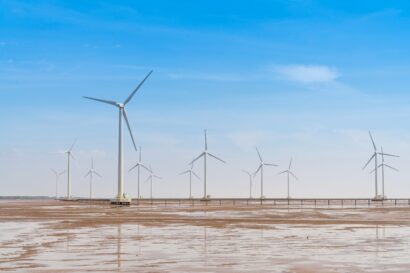AG INSIGHT | 02/08/2017
Scientific research will uncover new insights into offshore wind

In-depth scientific research and monitoring in a real-time environment is recognised as vital to maximising learning opportunities for the offshore wind sector, says Adam Ezzamel, Project Director of the EOWDC for Vattenfall.
That is why Vattenfall is pleased to have announced the first successful projects for its ground-breaking €3million offshore wind research programme which will be based at our European Offshore Wind Deployment Centre (EOWDC) in Aberdeen Bay.
The diverse range of projects is set to give fascinating insights on a number of key areas, including the lives of marine species such as bottlenose dolphins, salmon, sea trout and sea birds. The socio-economic impact of offshore wind farms is also to be examined.
Believed to be the largest-scale offshore wind research programme of its kind, the successful projects were selected by a specialist scientific panel which anticipates making further funding announcements.
The panel comprises representatives from Marine Scotland Science, Scottish Natural Heritage, the Scottish Environment Protection Agency, RSPB Scotland, the Joint Nature Conservation Committee, Whale and Dolphin Conservation, The Crown Estate, Vattenfall and Aberdeen Renewable Energy Group.
Each of the projects, as outlined below, have the potential to unlock new insights into the offshore wind environment and determine influencing environmental factors – and put the UK at the forefront of the industry’s research and development globally.
We look forward to the programme delivering real, tangible data that increases our understanding of the relationship between offshore renewable energy developments and the environment.
Furthermore, this data could help inform not only decision-making in the UK but policy-making in Europe and beyond.
SMRU Consulting and the University of St Andrews – Improving understanding of bottlenose dolphin movements along the east coast of Scotland.
A joint project between the University of St. Andrews Sea Mammal Research Unit and SMRU Consulting will examine the ranging patterns of bottlenose dolphins along Scotland’s east coast. This will include sampling in the Tay Estuary intensified to improve our understanding of the extent and patterns of movement between the northern and southern parts of their range.
The species has been studied in Scotland since 1989 and the data gleaned from this project will be combined with existing research, which will improve our knowledge of population size and birth and mortality rates.
The River Dee Trust, Aberdeenshire, and Marine Scotland Science – Assessing the interactions between salmon and sea trout with offshore wind technology.
Salmon and sea trout will be the subject of research by The River Dee Trust and Marine Scotland Science (MSS). Together, they will study the migration routes of both to determine how these change in relation to the marine physical environment.
By tracking hundreds of fish as they exit the rivers Dee, Don and Ythan and navigate up the North-east coast, the researchers will map migration routes and, given offshore wind developments are likely in coastal waters, gather key data on the scale of interactions with the EOWDC. This information will be fed into MSS existing hydrodynamic model.
MacArthur Green, Glasgow – Measuring connectivity between auk special protection areas populations and offshore wind farms, and tracking non-breeding season movements of guillemots and razorbills.
MacArthur Green will use geolocator tags to collect information on two types of seabirds – guillemots and razorbills. Both are considered potentially vulnerable to displacement by offshore wind developments.
These tags, which have a battery life of up to five years, will help fulfil the project’s aim of collecting data on the year-round movements of both birds and how they are affected by offshore wind developments.
The tags are small enough to fit to a leg ring and can record both light intensity and sea surface temperature (SST) on a time base memory chip. SST varies considerably in different locations and the combination of both should allow for greater accuracy in estimating positions.
Tracking seabirds for prolonged periods of time is a challenge so there’s not a lot of data on their movements. But it’s hoped this project will uncover routes used by guillemots and razorbills, where they spend time in winter and if they nest in different locations or regularly return to favoured spots.
Oxford Brookes University, Oxford – The socio-economic impact of offshore wind on the human environment.
Oxford Brookes University will carry out an in-depth assessment of the socio-economic impact of offshore wind developments on the people living in the immediate vicinity of the EOWDC. The economic and societal benefits of renewable developments, such as job creation and inward investment, have been well-documented but this will go into greater detail than ever before.
The study will look at the methods used to predict the likely impacts of developments before planning permission is given and gather data on the impacts during the construction and operational phases of the EOWDC. To determine influential factors and where impacts vary and align, the project will also look at two other UK developments as well as collect an overview of practices in other countries including the Netherlands and Denmark to further identify opportunities for cross-learning.
Adam Ezzamel is Program Director of the EOWDC at Vattenfall UK


